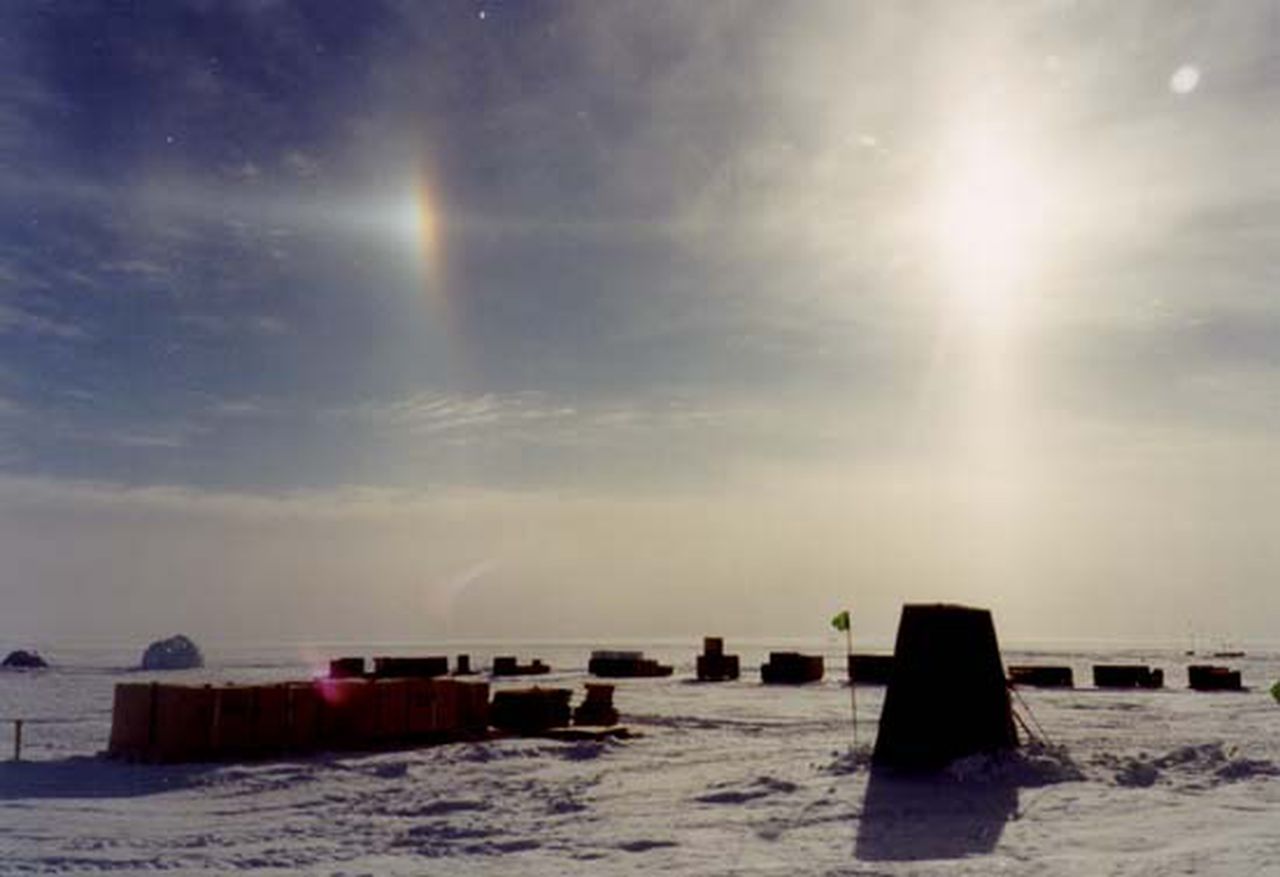Sun dogs in the skies: What is a parhelion?
You might have noticed the sky doing some unusual things over the weekend.
Many noticed a rainbow-like ring partially encircling the sun.
It’s a phenomenon called a parhelion, and it’s not all that uncommon, according to the National Weather Service.
A parhelion is the scientific name for what’s more commonly known as a sun dog.
The weather service defines it as: “Either of two colored luminous spots that appear at roughly 22 degrees on both sides of the sun at the same elevation. They are caused by the refraction of sunlight passing through ice crystals. They are most commonly seen during winter in the middle latitudes and are exclusively associated with cirriform clouds. They are also known as mock suns.”
The colors usually go from red closest to the sun to blue on the outside of the sun dog. Sun dogs are also known as “mock suns” or “parhelia,” which means “with the sun,” according to the weather service.
Over the weekend high clouds were present in the skies above Alabama. Those clouds were so high up in the atmosphere that the water vapor they were made of crystallized into ice. The fall sun passing through those clouds reflected light like a prism, producing a rainbow-like effect around the sun.
According to the Farmer’s Almanac, in medieval times, sun dogs were sometimes interpreted as the sign of the Trinity, a sign of great fortune. Today, according to the Almanac, seeing a rainbow or a sun dog is sometimes interpreted as a sign of good luck.
Sun dogs also have some mythology associated with them. According to the Almanac and Greek mythology, Zeus walked his dogs across the sky, and those “false suns” in the sky on either side of the sun’s disk were his two dogs.
